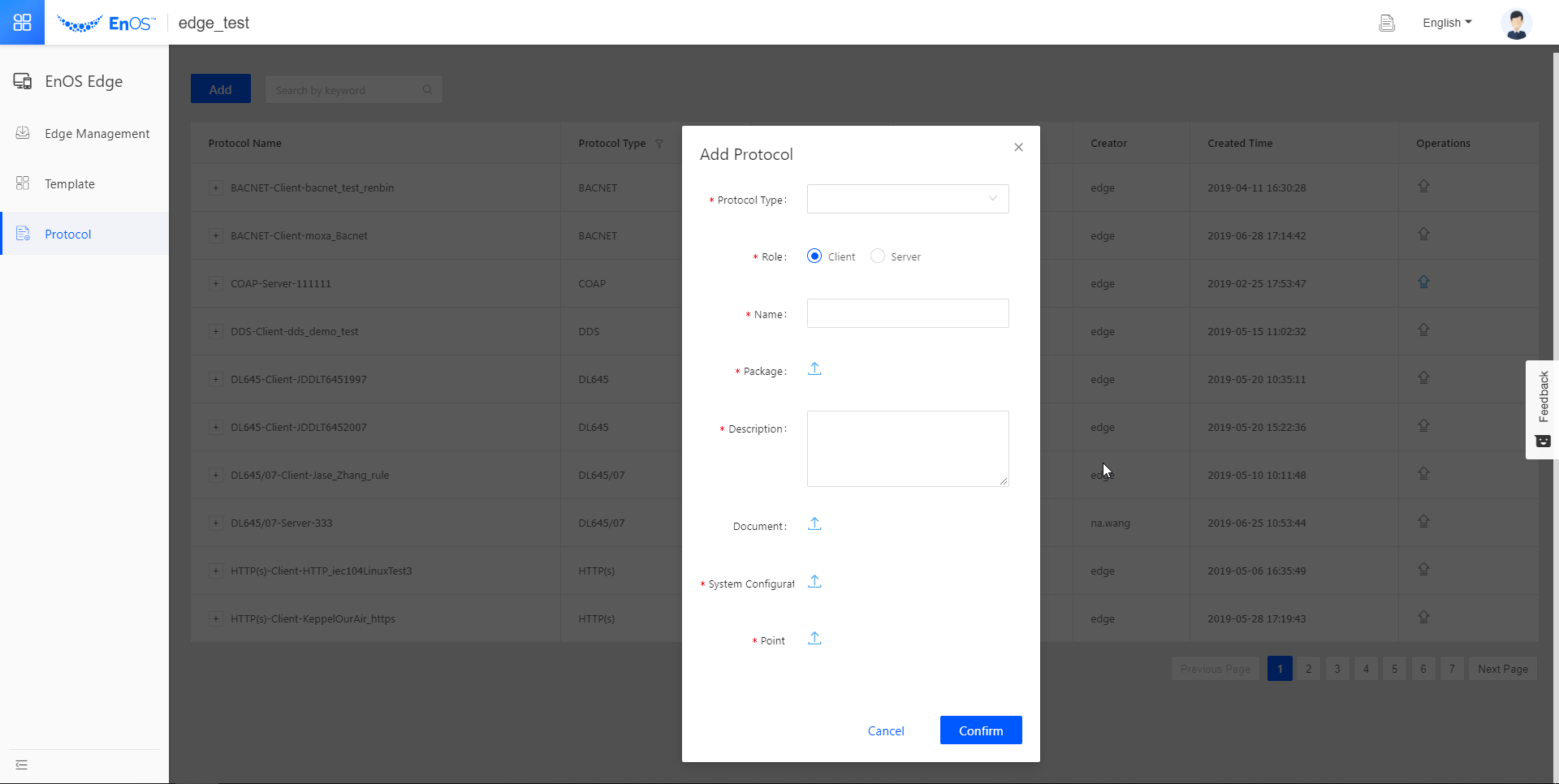Creating Protocols¶
Different user roles can perform different operations for protocols. Administrators can manage the communication protocols that EnOS Edge supports at EnOS Edge > Protocol, including adding, viewing, updating, publishing and deleting protocols while non-administrators can only view the various protocols.
About This Task¶
This section shows how to create protocols in the EnOS Management Console.
Before You Start¶
Ensure that you can log in to the EnOS Management Console with the OU administrator account to create a protocol.
Creating a Protocol¶
Log in to the EnOS Management Console, select EnOS Edge > Protocol from the left navigation menu, and click Add.
In the Add Protocol window, fill in the following information.
Protocol Fields¶ Parameter
Description
Protocol Type
Select from the protocols pre-defined by EnOS.
Roles
Select whether Edge acts as a server or client in its communication with sub-devices.
Name
Enter the identifier for the protocol.
Package
Upload the binary file of the protocol program.
Description
Enter a description for the protocol.
Document
Upload the .zip protocol document.
System Configuration
Upload the protocol.sys that contains the communication configuration for this protocol.
Point
Upload the point.csv of this protocol.

Click Confirm to finish creating a new protocol. You can now view the new protocol in the list.
Results¶
The new protocol is displayed in the [Protocol Type]-[Role]-[Protocol Name] format. For example, if you create a new client protocol of BACnet as protocol type with the name “bacnet_test_renbin”, its name will be “BACnet-Client-bacnet_test_renbin”.
The default version of the new protocol is v1.0_debug. It is named as per the following rules and format: v[Main Version No.].[Revision No.]_[State suffix]
Field |
Description |
|---|---|
Main Version No. |
Represents a version that contains new functions. Its value is an integer starting from 1 and will increment by 1 for every new version. For example, if the original version is v1.0_release, then the version will be changed to v2.0_release when a new function is added. |
Revision Number |
Identifies a fixed problem. Its value is an integer starting from 0. When a problem is fixed, the revision number increments by 1. For example, if the original version is v1.0_release, when a problem is fixed for the current version without any addition of new functions, the version will be changed to to v1.1_release. |
State Suffix |
Identifies the release state. Its value may be _debug or _release. The protocols with _debug are usually the beta-version protocols that have just become available and the protocol manager can still modify protocols with this suffix. Protocols with _release are the officially released protocols, which are locked and can only be used, viewed, and downloaded and cannot be modified. |
Next Step¶
Users can manage the protocols. See Managing Protocols.